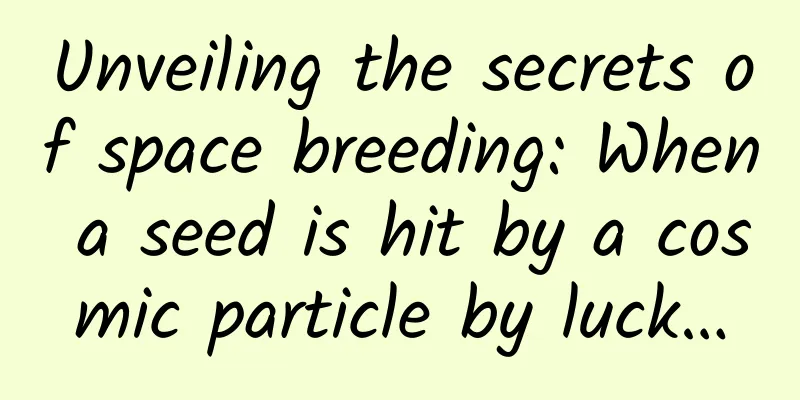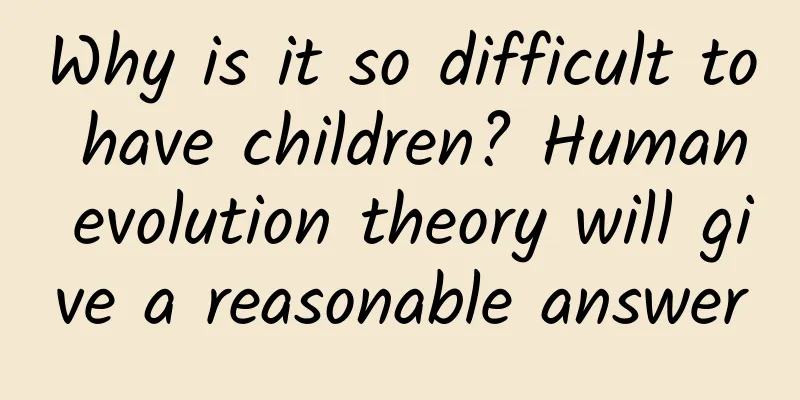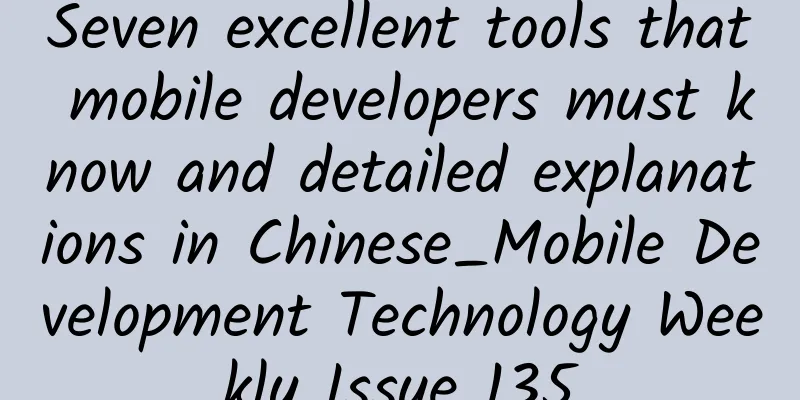Unveiling the secrets of space breeding: When a seed is hit by a cosmic particle by luck…

|
What are the differences between seeds that have been in space? Are agricultural products bred in space safe to eat? Is the ultimate goal to grow potatoes on Mars? Liu Lu, chief scientist of the National Space Breeding Project, reveals the secrets >> Written by reporter Lv Bingxin Edited by Ji Jingjing New Media Editor/Li Yunfeng Photos provided by Liu Luxiang (except those with signature) Interview experts Liu Luxiang (Deputy Director of the Institute of Crop Sciences, Chinese Academy of Agricultural Sciences, Chief Scientist of the National Wheat Industry Technology Department, Chief Scientist of the National Space Breeding Project, and Director of the National Crop Space Mutagenesis Technology Improvement Center) The Shenzhou 13 crew returned to Earth after 183 days in space. Along with the three astronauts, there were 12,000 seeds. Why do we need to take so many seeds to space? From a seed being hit by a cosmic particle, to breeding a new variety; from innovating germplasm resources to serve agricultural production, to enriching people's dining tables, what role does space breeding play? ◈ ◈ ◈ A seed that was hit by a lucky cosmic particle “Food is the first necessity of the people” is often used to describe the importance of food in people’s lives. Now, “food” has been given new connotations by aerospace breeding. Space breeding, also known as space mutagenesis breeding, is the process of placing crop seeds or test tube seedlings on a returning spacecraft or space capsule, using the combined mutagenic effects of the special environments of space such as cosmic rays, microgravity, and high vacuum to cause genetic mutations in the organisms themselves. The seeds are then returned to land and screened and cultivated by scientific researchers for many generations to form new varieties with stable characteristics. Just like astronauts, seeds sent into space are carefully selected and only those that meet certain requirements can get a "ticket". Liu Luxiang said that seeds that can be sent into space must have excellent comprehensive traits, consistent genetic stability, strong vitality and high germination rate. In addition, since seed mutations occur randomly after being sent to space, breeders need to clearly define their screening targets in advance. For example, the existing seed varieties have good overall performance, but the disadvantage is that the plants are too tall and easily fall over, resulting in reduced yields. Therefore, after this batch of existing seeds is subjected to space mutagenesis, shorter plants can be selected for cultivation. ▲The process of space-induced mutation breeding technology. (Source: Farmers Daily) So, what changes will happen to the seeds after they go up to the sky? How do we know which seeds have changed? Liu Luxiang said that after a seed travels through space, a series of changes will occur. For example, the growth of wheat seedlings is significantly accelerated after a space flight, while the growth of sorghum seedlings returned from space is significantly inhibited. "But not every seed will change. The change may be only a thousandth or even a few ten-thousandths," Liu Luxiang said. In 2006, in addition to a large number of seeds, my country's first space breeding satellite "Shijian 8" also carried a series of special devices for detecting the space environment, including a set of special equipment - nuclear track plates, which can be used to detect whether seeds have been hit by cosmic particles. Liu Luxiang introduced that the nuclear track plate is a "sandwich" structure, with seeds in the middle and nuclear latex materials on both sides. After returning to the ground after being carried in space, the nuclear track plate can be taken out for testing to distinguish. "When examining the photosensitive film under a microscope, a bright spot like a 'torpedo' will appear on some seeds." Liu Luxiang said that this is certain that the seed was hit by a cosmic particle by chance. ◈ ◈ ◈ Going through "Ninety-nine Eighty-one Tribulations" In the hall of the Institute of Crop Sciences of the Chinese Academy of Agricultural Sciences, rows of space seeds in transparent jars are displayed. There are wheat varieties such as Luyuan 502, Hangmai 247, Hangmai 501, and "Zhonglu" mung bean varieties such as Zhonglu No. 12 and Zhonglu No. 13... all kinds of agricultural products are available. ▲Close-up of the ear of Hangmai 247 "These are all new varieties that have been bred through space mutagenesis or in combination with conventional breeding," Liu Luxiang said. At the same time, he clarified that many people have a misunderstanding that anything that has been sent to space is space seed, but this is not the case. "Going to space is only the first step. We also need to observe whether the genes of the seeds have changed, whether the superior mutant plants with changed genes can be "lucky" selected, and then through reproduction, multi-point testing, etc., and finally those that can pass the approval of the Crop Variety Approval Committee are called space seeds." Liu Luxiang said that it would take at least 8-10 years to cultivate a relatively mature variety. First, breeders need to go through a 4-5 year process of variant screening, stabilization, and comparison. After that, there are another 4-5 years of prescribed actions, namely, 2 consecutive years of variety comparison tests, 2 years of regional variety tests, and 1 year of production tests. In the long breeding process, any problem in any link may lead to the failure of all previous efforts. Liu Luxiang said that if a special disease occurs in a certain year, all previous work will be in vain. "Breeding is very difficult. Every item must pass the test, including yield, resistance, quality, and market value. A large number of strains may be eliminated during the trial. Only those that pass the variety approval are called space seeds, which is a very small proportion." ◈ ◈ ◈ Agricultural products bred in space are safe to eat After going through all the "hard work" along the way, space seeds can finally reach the tables of ordinary people. Pumpkins as big as millstones, bell peppers as big as fists, lodging-resistant space wheat, big and sweet space strawberries, peppers with higher vitamin content... have greatly enriched the taste buds of Chinese people. "In cultivating space seeds, breeders not only pursue yield, but also pay attention to excellent traits such as quality improvement and nutritional improvement." Liu Luxiang said. ▲China's first new sweet pepper variety bred using space-induced mutation breeding Some people are concerned about whether agricultural products grown in space are safe and whether there will be residual space radiation. Liu Luxiang said that he had conducted an experiment to verify this issue in 1996. The wheat seeds carried by my country's 17th recoverable satellite were tested for 48 hours using professional instruments. The results showed that compared with the ground control group, the seeds flying in space did not increase any radioactive components. In other words, space mutation is essentially the same as the mutation process of natural evolution over hundreds of millions of years in nature, and can be eaten safely. ▲Yufan No. 1 tomato is the first new tomato variety bred by space-induced mutation breeding in China Similarly, agricultural products bred on the ground using simulated space-induced mutagenesis and nuclear radiation-induced mutagenesis techniques can also be safely eaten. Due to the limited opportunities for space experiments, in order to make up for the limitations of space breeding and to achieve multiple experiments and breeding of new varieties a year, breeders use high-energy accelerators and nuclear radiation technology on the ground to carry out seed mutagenesis. Liu Luxiang said, "This gives us more opportunities to conduct experiments, process larger quantities of seeds, and have the opportunity to make continuous improvements." In recent years, Liu Luxiang has led a national collaborative research team to use these new technologies to cultivate a series of new varieties of grain crops, oil crops, vegetables, cotton, etc. "All of which can be safely enjoyed." (Picture from the Internet) In addition, some people are confused about the relationship between space breeding and genetic modification. Liu Luxiang explained that genetic modification is the artificial introduction of genes with certain excellent traits into plants to change their comprehensive traits. It has become one of the most cutting-edge biological breeding technologies in the world. Space breeding uses the space environment to accelerate the genetic mutation of seeds themselves, expand the range, and increase the frequency. ◈ ◈ ◈ Create rich germplasm resources to serve agricultural production In fact, space breeding is not only connected to people's dining tables, but also to the country's food security. Seeds are the foundation of agricultural modernization, and seeds are the "chips" of agriculture. At present, my country's agricultural breeding faces the problem of a lack of germplasm resources with independent intellectual property rights, which seriously restricts the rapid development of the agricultural economy. Space breeding, as a new high-tech breeding method that combines aerospace technology, biotechnology and agricultural breeding technology, plays an important role in germplasm resource innovation and "holding on to Chinese seeds". Compared with conventional ground-based mutagenesis breeding, aerial breeding has the advantages of more mutations, greater variation, and faster stabilization. It is a new way to cultivate new varieties and new germplasm resources of high-yield, high-quality, early-maturing, and disease-resistant crops. Through space mutagenesis, the mutation process of crop seeds is accelerated, the breeding cycle is shortened, and breeding materials are enriched. In 1987, my country's ninth recoverable scientific experimental satellite sent a batch of crop seeds into the distant space for the first time. Scientists accidentally discovered that some genetic mutations occurred in a few seeds that had been sent to space during the experiment, which opened the prelude to space breeding. Zhao Hui, former chief engineer and chairman of the Aerospace Biology Group of the China Academy of Space Technology, once introduced that when launching a satellite, it is required to be vertical to the center of mass of the satellite. In order to solve this problem, it is necessary to add a counterweight to the satellite. If the counterweight of the satellite is replaced and something of the same weight and volume that has a purpose is put in, such as an experimental device, the utilization of space resources can be realized. In fact, it is out of this idea that space-borne missions were born. In 2006, Liu Luxiang, as the chief scientist of the National Space Breeding Project, was responsible for the main breeding work of "Shijian-8", the only breeding satellite in my country and even in the world. "Shijian-8" carried more than 2,000 species of rice, wheat, corn, cotton and linen fiber, oil crops, vegetable crops, forestry and fruit flowers, microbial strains and small grains, about 208 kilograms of seed materials, contributing rich resources to my country's breeding research. From 1987 to the present, my country has carried out more than 30 years of exploration and systematic research using recoverable satellites, the Shenzhou spacecraft and other spacecraft. Space breeding has taken a leading position internationally and has achieved very important results, breeding nearly 300 new varieties and generating huge social and economic benefits. "In terms of promotion and application, there are approximately 30 to 50 million mu of new varieties bred through space mutagenesis technology or the combination of space mutagenesis and other breeding technologies. Calculated based on an average increase of 20 kilograms per mu, the social and economic benefits generated by the increased grain production are very significant," Liu Luxiang proudly introduced to reporters. In terms of the industrialization of space breeding, Liu Luxiang believes that this should not be much different from the industrialization of cultivating new varieties using other breeding methods. The most important task is to sort out the characteristics of the varieties and match good varieties and good methods in their adapted areas, so as to maximize the area promotion and benefits. ▲Luyuan 502 single plant At present, the wheat variety with the largest promotion area of aerospace breeding in my country is Luyuan 502, which was jointly bred by Liu Luxiang's team and Li Xinhua's team from Shandong Academy of Agricultural Sciences. Due to its excellent high yield, stable yield and wide adaptability, the promotion and application area exceeded 20 million mu in 2018, making it the second largest variety in the country. The yield increase effect is very significant, and it won the second prize of the National Science and Technology Progress Award in 2019. "If farmers choose to plant Luyuan 502 wheat, the yield and benefits will be effectively improved with the same area and the same input," said Liu Luxiang. ◈ ◈ ◈ The ultimate goal: growing potatoes on Mars? It is said that the ultimate goal of space breeding is not on Earth, but to realize the desire to "grow potatoes on Mars." In response to this, Liu Luxiang said that "growing potatoes on Mars" and space breeding are actually two different goals and directions. Space breeding is to use the space environment to induce seeds, dedicated to serving humans on the ground, and cultivating crop varieties with higher yields, better quality, and stronger resistance; while "growing potatoes on Mars" is to provide a space life support system for humans to pursue their dreams of deep space, and seize the commanding heights of long-term residence and scientific and technological life in space in the future. In fact, as early as the late 1950s and early 1960s, Soviet and American scientists began to use various spacecraft to conduct hundreds of plant experiments, some of which completed their entire life cycle in space and produced some fresh food supplies. On October 29, 2021, astronauts on the International Space Station tasted space peppers with a planting cycle of 4 months and made space tortillas by themselves. The remaining peppers were brought back to Earth for research. It is reported that this is one of the most complex plant experiments on the International Space Station to date, and overcoming the challenges of growing fruits and vegetables in a microgravity environment is very important for long-term space missions. Zhao Hui once said that while my country was implementing manned spaceflight and deep space exploration programs, it had begun to study the growth and development of higher plants on the ground in a space environment in order to create a controlled space ecosystem so that people can obtain oxygen, water and food sources in a space environment. In particular, in the Tiangong-2 laboratory, astronauts have successfully grown lush green lettuce. 2022 is the year of decisive battle and victory in the construction of my country's space station. According to the China Manned Space Engineering Office, China's space station will complete its in-orbit construction this year. At present, the astronaut crew for two manned flight missions during the space station construction phase has been selected. In the future, China's space station will be inhabited for a long time to live and work, and conduct more scientific research. Whether it is "Mars potatoes" or "space seeds", aerospace breeding technology is moving towards higher quality and higher levels. Together with other breeding technologies, it will strengthen our country's "agricultural core", make good "Chinese seeds", and create a new miracle of "Chinese grain". Produced by: Science Central Kitchen Produced by: Beijing Science and Technology News | Beijing Science and Technology Media Welcome to share to your circle of friends Reproduction without authorization is prohibited |
Recommend
Introduction to key new features of iOS 14, the list of supported devices may be the same as iOS 13
iOS14 Apple's next-generation iOS operating s...
Tencent Youlianghui’s strategy for achieving explosive advertising volume!
When I came to the company in the morning, the fi...
5-picture mind map teaches you 7 major community operation methods!
WeChat group marketing has been very popular in r...
BYD Tang DM-i: What is the black technology of super hybrid? The fuel consumption is only 5 liters per 100 kilometers when the battery is depleted
The automotive industry is in the midst of a dram...
The colors of fruits are not just for the eyes! Please "see the colors" →
Fruits are not only sweet, but also contain a var...
The practical method of increasing 3 million followers on Douyin in 3 months
I have been working on TikTok for more than a yea...
How much does it cost to produce an e-book mini program on the market in Guangzhou?
How much does it cost to create an e-book mini pr...
What is a good product and how can a good product make money for a company?
Any business model and product that is not aimed ...
Tips for attracting new customers and retaining customers from Pinduoduo/Meituan and others!
High-quality cases cannot be hidden. I will updat...
After seeing this “bacteria level”, do you still dare to use toilet paper to wipe your child’s mouth?
Audit expert: Zhu Guangsi Member of Beijing Scien...
Ministry of Industry and Information Technology: Special rectification will be carried out on these eight types of APP behaviors
[[283734]] On November 25, the Ministry of Indust...
Smartphones will disappear in five years, says survey
According to CNBC, a new consumer survey shows th...
Apple releases OS X 10.10.5 update, mainly to fix bugs
Apple today released OS X 10.10.5 for all users. ...
These 4 breakfast combinations are not recommended for you to eat every day! Milk and eggs are on the list?
The pace of life is getting faster and faster, an...
How to use data to optimize channel delivery and achieve user growth?
With the disappearance of the new population divi...









